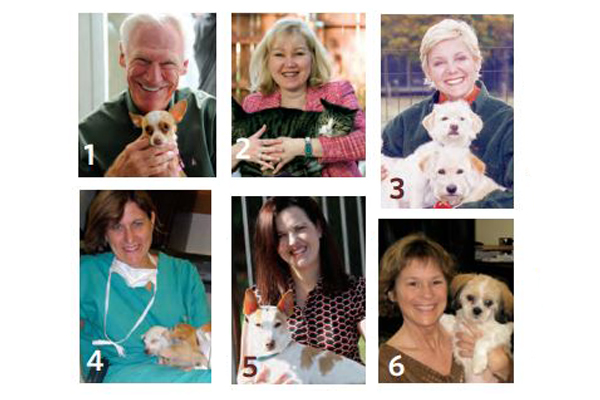The No Kill Vision Takes Center Stage at the Humane Society of the United States
by Christie Keith | May 01, 2009

Saving animal lives isn’t the first thing that comes to mind when people think of Las Vegas, but that’s exactly what was on everyone’s mind when Maddie’s Fund® held a day-long workshop at the Humane Society of the United States’ Animal Care EXPO in Las Vegas last April.
Titled, “Is An Adoption Guarantee Really Possible? Four Steps to Success,” it featured eight of the nation’s top animal welfare leaders, including PAWS Chicago’s founder, Paula Fasseas, and drew more than 200 attendees interested in saving the lives of more of their communities’ animals.
In the audience were people from every part of the shelter community. “We welcomed the opportunity to present the idea of adoption guarantee sheltering, and the goal of making America a no-kill nation, to a new audience,” said Maddie’s Fund President, Richard Avanzino. “Traditional shelters, animal control, adoption guarantee facilities, rescue groups – all are part of our movement. Our message is for everyone.”
The eight-hour session opened with Avanzino announcing that Maddie’s Fund, along with HSUS, were sponsoring a three-year Ad Council campaign called the Shelter Pet Project, set to launch this summer. Its purpose? A massive makeover of the public’s perception of shelter animals, with the goal of getting every single healthy and treatable shelter pet in America into a good home.
“The Shelter Pet Project (www. theshelterpetproject.org) will convey that these are good, loving pets, who find their way to our nation’s shelters through no fault of their own,” Avanzino said. “We’re going to make shelters and rescue groups the first destination of anyone looking to add a new animal member to the family.”
The message Nevada Humane Society Executive Director Bonney Brown and Charlottesville-Albemarle SPCA Director Susanne Kogut had for the audience was a simple one: Yes, adoption guarantee really is possible in any community – and they know, because they’ve implemented it in their communities.
“The first step is to believe that it’s possible, and that’s exactly what we’re here to help you do,” Kogut said. After Brown and Kogut walked the audience through the basic steps of a transition to a no-kill community, Robin Starr of the Richmond SPCA and Betsy Saul, president and founder of Petfinder. com, addressed how shelters can fine-tune their customer service approach to maximize adoptions, volunteer rates, and donations.
What about animals who come into the shelter with health and behavior problems? “Treat the treatable,” Natalie Isaza, DVM, from Maddie’s® Shelter Medicine Program at the University of Florida said. Then she and Sheila Segurson-D’Arpino, DVM, DACB, Senior Applied Animal Behaviorist at the Animal Rescue League of Boston outlined a comprehensive approach to preventing and treating medical and behavior problems in shelter animals, stressing the importance – even the urgency – of developing a network of foster homes to get animals in need of treatment, or animals who don’t handle a shelter environment well, into something more like the home they’ll one day find.
Foster programs were a big part of Paula Fasseas’ recipe for success, too. She joined John Boone from the SPCA of Northern Nevada to talk about strategies shelters can use to find homes for the harder-to-place animals – older dogs and cats, pets with special needs, and even just animals who are shy.
“We set things in place so the animals will succeed,” said Fasseas. “We send dogs and cats with medical problems to foster homes, where they’re cared for. Many have chronic illnesses. Without a vibrant foster program, placing these animals would be very difficult. Our foster program is our critical path for medically challenged animals.”
But PAWS Chicago’s reliance on people power goes beyond just the foster program. “At every step of our journey, we engage the community and utilize volunteers,” she said.
Fasseas closed the session by echoing the same words that opened it: A no-kill nation really is an achievable goal. “Everything is possible if you just open the doors to the community.”
